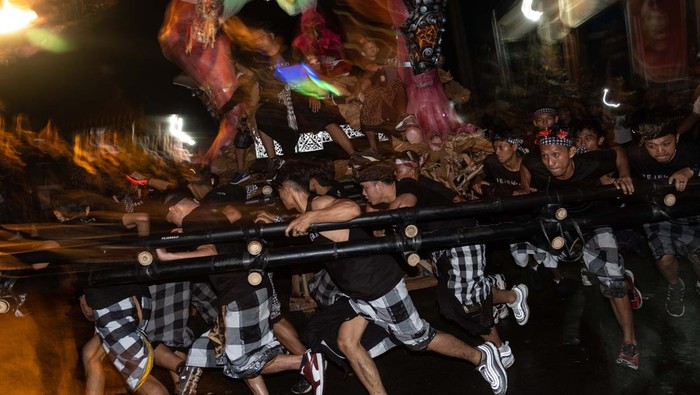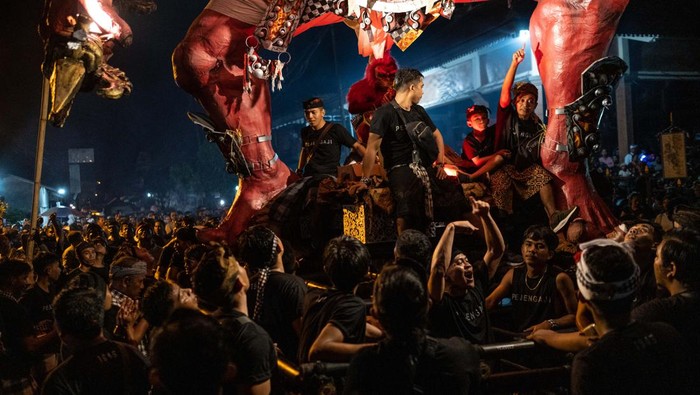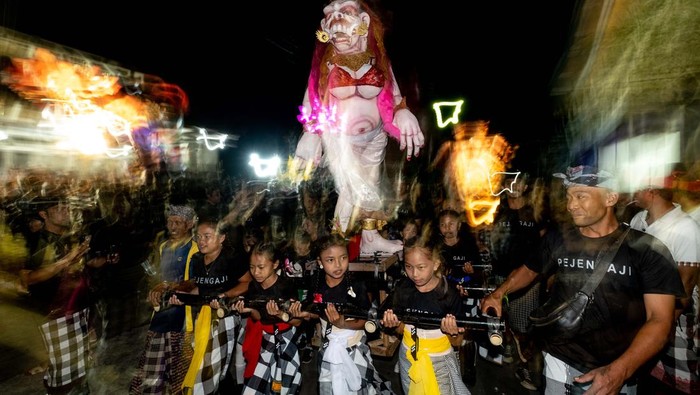Bali - Umat Hindu di Bali melakukan serangkaian ritual untuk merayakan Nyepi, salah satunya adalah pawai ogoh-ogoh. Pawai ini menjadi salah satu daya tarik wisatawan.
Foto Travel
Pawai Ogoh-ogoh Meriahkan Penyambutan Nyepi di Bali

Sejumlah pemuda membawa ogoh-ogoh di Desa Tegalalang, Gianyar, Bali, Senin (20/3/2023).

Umat Hindu di Bali melakukan serangkaian ritual untuk merayakan Nyepi, salah satunya adalah pawai ogoh-ogoh.

Ogoh-ogoh adalah karya seni patung dalam kebudayaan Bali yang menggambarkan kepribadian Bhuta Kala. Dalam ajaran Hindu Dharma, Bhuta Kala merepresentasikan kekuatan (Bhu) alam semesta dan waktu (Kala) yang tak terukur dan tak terbantahkan.

Dalam perwujudan patung yang dimaksud, Bhuta Kala digambarkan sebagai sosok yang besar dan menakutkan; biasanya dalam wujud Raksasa.

Dalam fungsi utamanya, Ogoh-ogoh sebagai representasi Bhuta Kala, dibuat menjelang Hari Nyepi dan diarak beramai-ramai keliling desa pada senja hari Pangrupukan, sehari sebelum Hari Nyepi.

Menurut para cendekiawan dan praktisi Hindu Dharma, proses ini melambangkan keinsyafan manusia akan kekuatan alam semesta dan waktu yang maha dashyat.

Pawai ogoh-ogoh juga menjadi salah satu daya tarik wisatawan mancanegara di Pulau Dewata.

Banyak wisatawan lokal hingga mancanegara yang sengaja datang ke Bali menjelang Nyepi untuk melihat serangkaian tradisi yang dilakukan sebelum Nyepi.













































 Upload Photo
Upload Photo
 Write a Story
Write a Story

















Komentar Terbanyak
Wanita Palembang Nekat Nyamar Jadi Pramugari, Batik Air Buka Suara
Koster Tepis Bali Sepi, Wisman Naik, Domestiknya Saja yang Turun
Melawai Plaza: Markas Perhiasan Jakarta yang Melegenda Itu Tak Lagi Sama